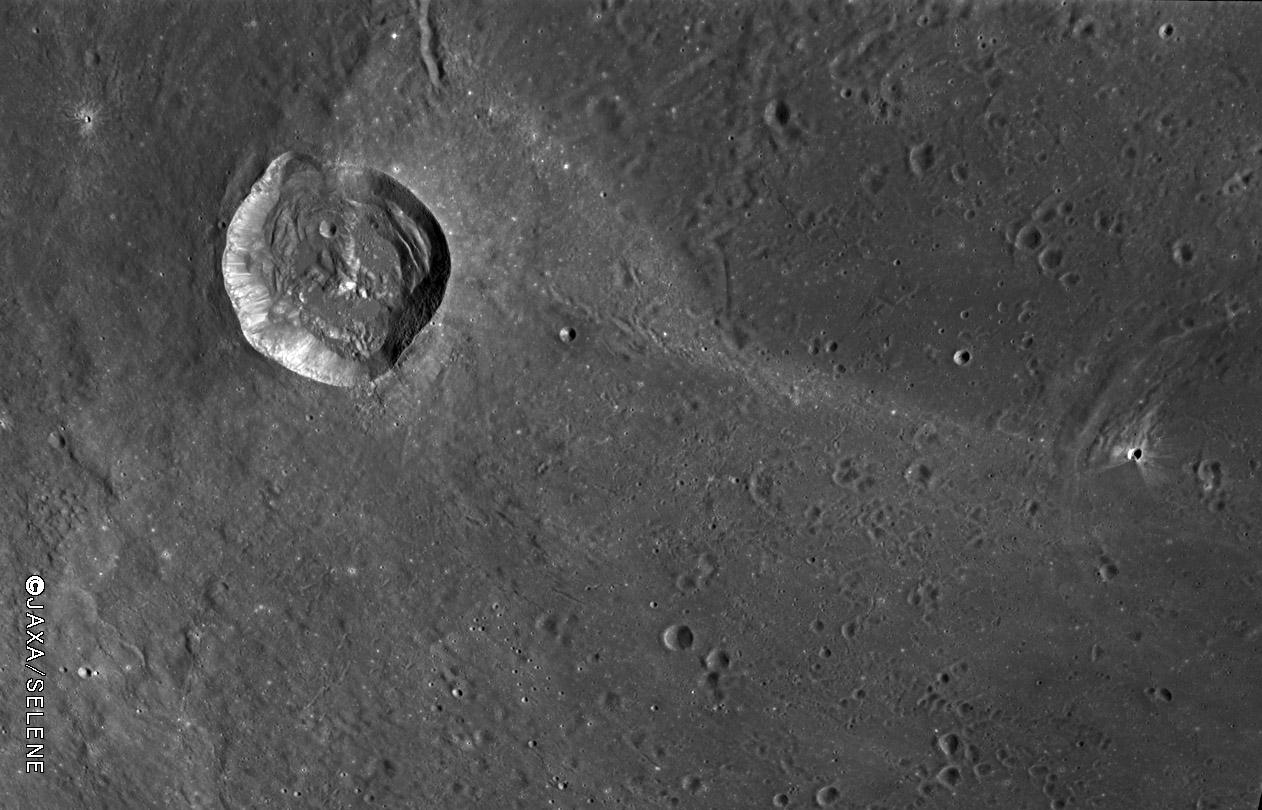Difference between revisions of "November 28, 2009"
| (One intermediate revision by the same user not shown) | |||
| Line 12: | Line 12: | ||
geologists [http://www.lpi.usra.edu/resources/mapcatalog/usgs/I546/ mapped] it as older than Theophilus, but its walls seem completely unaffected by ejecta from the larger crater. Many secondary craters from | geologists [http://www.lpi.usra.edu/resources/mapcatalog/usgs/I546/ mapped] it as older than Theophilus, but its walls seem completely unaffected by ejecta from the larger crater. Many secondary craters from | ||
Theophilus are in this image, and there is a faint series of lineations that suggest surface sanding of the ejecta from Theophilus. Mädler seems to have no | Theophilus are in this image, and there is a faint series of lineations that suggest surface sanding of the ejecta from Theophilus. Mädler seems to have no | ||
| − | ejecta superposed on Theophilus' except for the odd bright ray extending eastward to Daguerre. The 19th century British selenographer [ | + | ejecta superposed on Theophilus' except for the odd bright ray extending eastward to Daguerre. The 19th century British selenographer [https://the-moon.us/wiki/M%C3%A4dler Elger] described |
this as a <em>bright elbow-shaped marking</em>, and it must be from Mädler but the reason for its shape and uniqueness is unknown. Unrelated to the ray, but at its | this as a <em>bright elbow-shaped marking</em>, and it must be from Mädler but the reason for its shape and uniqueness is unknown. Unrelated to the ray, but at its | ||
far end, is a beautiful bright crater pit, now seen to have formed from a low oblique impact. | far end, is a beautiful bright crater pit, now seen to have formed from a low oblique impact. | ||
| Line 19: | Line 19: | ||
<br /> | <br /> | ||
<strong>Related Links</strong><br /> | <strong>Related Links</strong><br /> | ||
| − | Rükl plate [ | + | Rükl plate [https://the-moon.us/wiki/R%C3%BCkl_47 47]<br /> |
<br /> | <br /> | ||
<hr /> | <hr /> | ||
Latest revision as of 18:54, 13 October 2018
A Master Mapper's Crater

image by Kaguya Terrain Camera
Hardly anyone pays attention to Mädler because its near neighbor Theophilus steals all the attention. But this Terrain Camera image shows that Mädler is
interesting in its own right, and in relation to its surroundings. Mädler is a complex crater, but with a diameter of 27 km it has only developed wall slumps,
not coherent terrace collapses. The eastern wall is reported to have a slope of 44°. Three masses of wall material have slid across the floor, constructing
ridges that divide it into three parcels apparently veneered with impact melt. Mädler's relation to Theophilus is a little uncertain. Back in the 1960s, USGS
geologists mapped it as older than Theophilus, but its walls seem completely unaffected by ejecta from the larger crater. Many secondary craters from
Theophilus are in this image, and there is a faint series of lineations that suggest surface sanding of the ejecta from Theophilus. Mädler seems to have no
ejecta superposed on Theophilus' except for the odd bright ray extending eastward to Daguerre. The 19th century British selenographer Elger described
this as a bright elbow-shaped marking, and it must be from Mädler but the reason for its shape and uniqueness is unknown. Unrelated to the ray, but at its
far end, is a beautiful bright crater pit, now seen to have formed from a low oblique impact.
Chuck Wood
Related Links
Rükl plate 47
Yesterday's LPOD: Taruntian Travails
Tomorrow's LPOD: Faces of the Moon
COMMENTS?
Register, Log in, and join in the comments.



